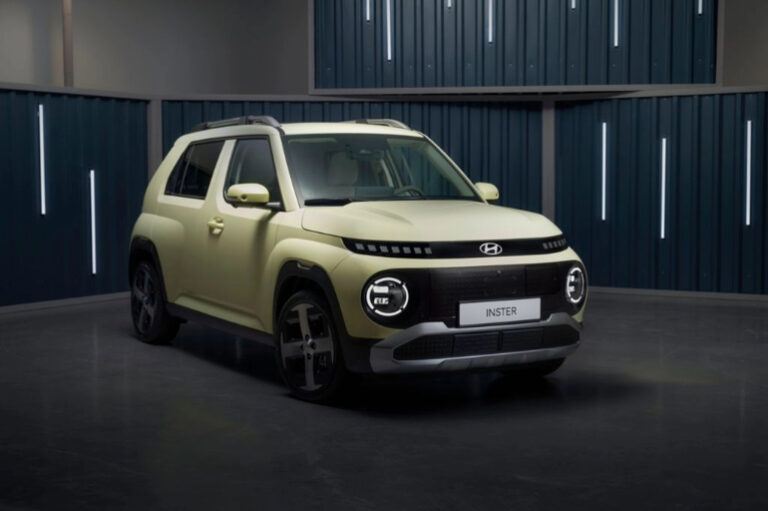Hyundai Motor Company has unveiled the all-electric INSTER, a new sub-compact EV it says offers segment-leading driving range and versatility, with advanced standard technology and safety features.
The Korean car maker has confirmed that the INSTER, which builds on the design used for the Korean-market CASPER model released in 2021, offers a driving range of up to 355 km, and a spacious interior despite its compact footprint.
Hyundai will launch the INSTER this year in Korea, followed by Europe, the Middle East, and Asia Pacific, and it is reportedly due Down Under early next year with price estimates putting it around the $40k mark. Specific timing and pricing is yet to be confirmed, though.
According to Hyundai, the INSTER is wider and features an extended body and wheelbase, compared with the CASPER it shares its DNA with, to offer more interior space and a more commanding road presence.
The exterior design is sleek and futuristic, with muscular wheel arches and circuit board-style bumper with a skid-plate incorporated. The side profile looks similar in its shape to a Suzuki Ignis – but the Hyundai is more muscular in its stance.
Hyundai says the compact dimensions of the INSTER make it ideal in urban environments, especially suited to tight parking spaces at 3825mm long, 1610mm wide and 1575mm high – similar in size to a three-door Suzuki Jimny, albeit not as tall.
A choice of 15-inch steel or alloy, or 17-inch alloy wheels will be offered, with all models receiving LED daytime running lights and pixel-graphic turn signals, tail lights and bumpers, with the additional option of a two-tone paint finish with a black roof.
Inside, the INSTER is equipped with a 10.25-inch digital cluster, a 10.25-inch infotainment touchscreen and a wireless charging dock that forms part of a compact centre console to create a greater sense of spaciousness within the cabin.
Hyundai says the INSTER has “walk-through access” across the front row, while all seats can be folded flat – including the driver’s seat – for increased space. A front bench seat option will also be offered. The rears are split 50/50 and recline and slide, like the fronts.
The INSTER will be offered in a range of exterior and interior colours, including the aforementioned two-tone options, making it a highly customisable vehicle.
Sustainable materials have been used throughout the vehicle, according to Hyundai, with recycled tyres used for the black pigment used in the exterior paint. Inside the cabin, recycled plastic drink bottles and a material extracted from sugarcane are used.
The INSTER will come equipped with a 42kWh battery as standard, with a long range 49 kWh battery option, and is powered by a single motor producing 71kW/147Nm in the base model and 84kW/147Nm in the long range option.
Long range models will be capable of up to 355 km on a single charge, with Hyundai quoting estimated energy consumption of 153 Wh/km, and it can be charged from 10 to 80 per cent in around 30 minutes using 120kW DC fast charging.
The INSTER features vehicle-to-load (V2L) functionality without additional equipment, too, providing power for 110v/220v external devices like electric bicycles, scooters and camping equipment.
Hyundai’s latest advanced safety technology is fitted to the INSTER, with features like surround-view monitor, parking collision avoidance assist, blind-spot view monitor, lane keeping assist, smart cruise control with stop and go, rear cross-traffic collision avoidance assist, driver attention warning, forward collision assist and more.
“With INSTER, we’ve taken the small SUV image to a bold new place for the global audience,” Senior Vice President and Head of the Hyundai Design Center, Simon Loasby said.
“INSTER punches well above its weight with distinctive design and an interior that maximises its potential in exciting, customer-centric ways.
“With INSTER we’re redefining what it means to drive a sub-compact EV.”
An additional INSTER CROSS variant will also join the range, featuring a more outdoor-focused design and enhanced off-road capability, but Hyundai has not shared details about when the model will launch.






